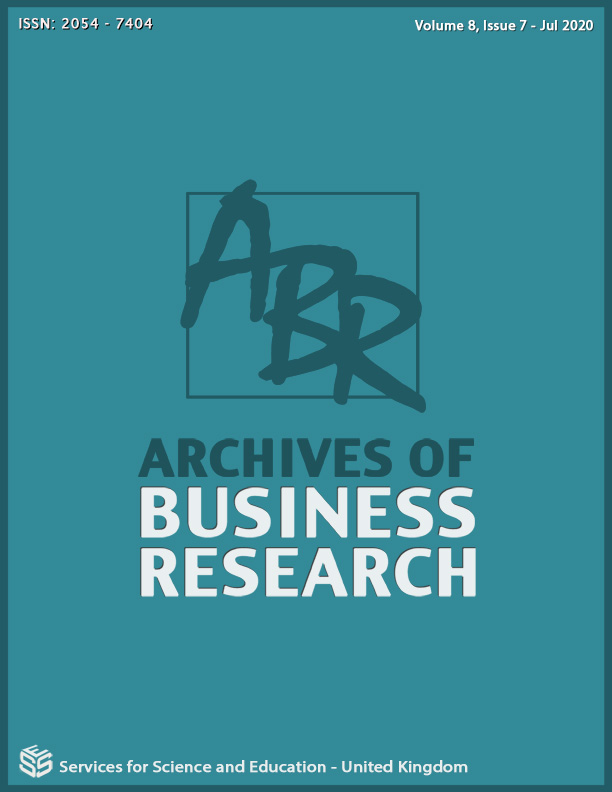The Role of Monetary Policy using the Taylor´s Rule under High Level Indebtedness: The Brazilian Case
DOI:
https://doi.org/10.14738/abr.87.8590Keywords:
Taylor´s Rule;, VECM;, Indebtedness;, DEBT/GDP;Abstract
This research investigated if the Central Bank of Brazil follows the Taylor´s rule under high indebtedness. Research data collected covered last 25 years from Dec/1995 until Feb/2020 from the Central Bank of Brazil and methodology applied was vector auto-regression (VECM) analysis with five macroeconomic variables as follows: Government net Debt to GDP (DEBT/GDP), Gross Domestic Product (GDP), Exchange Rate (EXRATE), Consumer Price Index (IPCA) and Interest Rate (SELIC). Government´s indebtedness in relation to Brazilian GDP doubled from January/2014 up to Mar/2020, what make this research an outstanding issue. Conclusively the high-level debt environment interferes in the Central Bank of Brazil policy. Therefore, the Taylor´s rule is not being followed as it is expected for inflation rate targeting control. With respect economic activity monitoring the Central Bank of Brazil still applies the Taylor´s rule, increasing the interest rate in overheated economic activity periods.
References
[2]. Barbosa F.H., Camelo F.D., João I.C.,(2016), A Taxa de Juros Natural e a Regra de Taylor no Brasil: 2003 – 201., Revista Brasileira de Economia, 70(4), 399–417, DOI 10.5935/0034-7140.20160021, ISSN 0034-7140.
[3]. Fournier J.M., Lieberknecht P., (2019), A Model-based Fiscal Taylor Rule and a Toolkit to Assess the Fiscal Stance, IMF Working Paper, WP/20/33. International Monetary Fund.
[4]. Gomes, C., & Holland, M. (2003)., Regra de Taylor e política monetária em condições de endividamento público no Brasil. Economia, 4(2), 333-361.
[5]. Mattson, R. S., & Pjesky, R. (2019), Approaching Modern Monetary Theory with a Taylor Rule. Economies, 7(4), 97.
[6]. Faraglia, E., Marcet, A., Oikonomou, R., & Scott, A. (2013), The impact of debt levels and debt maturity on inflation. The Economic Journal, 123(566), F164-F192.
[7]. Engle, R. F.; Granger, C. W. J. (1987), “Cointegration and Error Correction: Representation, Estimation, and Testing”. Econometrica, v.55, p.251-276.
[8]. Zou, X. (2018), VECM Model Analysis of Carbon Emissions, GDP, and International Crude Oil Prices. Discrete Dynamics in Nature and Society, 2018.
[9]. Enders W. (1995), Applied Econometrics Time Series. New York: John Wiley, 1995. 433p.
[10]. Johansen, S. (1988), Statistical analysis of co integration vectors, Journal of economic dynamics and control, 12(2-3), 231-254.
[11]. Johansen, S., & Juselius, K. (1990), Maximum likelihood estimation and inference on cointegration—with applications to the demand for money. Oxford Bulletin of Economics and statistics, 52(2), 169-210.
[12]. Campbell, J.Y. and Perron, P. (1991), Pitfalls and Opportunities: What macroeconomists should know about unit roots? NBER macroeconomics annual, 6, 141-201.






